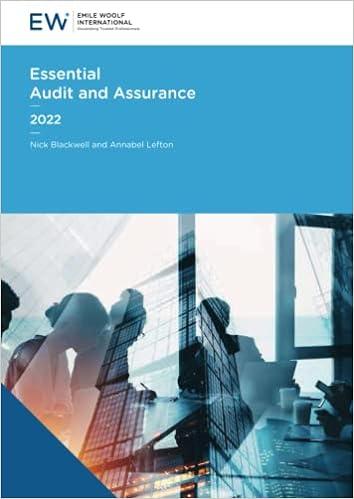Question
1. Which of the following statements is true about current liabilities? a. Current liabilities are obligations payable within one year or within the firms operating
1. Which of the following statements is true about current liabilities? a. Current liabilities are obligations payable within one year or within the firms operating cycle, whichever is longer b. Current liabilities are ordinarily recorded at maturity amounts rather than present value c. Current liabilities as those expected to be satisfied with current assets or by the creation of other current liabilities d. All of the above 2. Jamal borrowed $100,000 on July 1, 2018, and signed a four-year note bearing interest at 8%. Interest is payable in full at maturity on June 30, 2020. Jamal should report interest expense at December 31, 2018, of: a. $0 b. $4,000 c. $8,000 d. $32,000 4. Ling, Inc. sold $30,000 of gift cards during 2018. Also during 2018, $25,000 of gift cards were redeemed, some of which were sold in 2018 and some of which were sold in the prior year. Ling also concluded that $2,500 of gift cards sold in the prior year would never be redeemed, and Ling finished 2018 with a balance of $17,500 in deferred revenuegift cards. Ling should recognize revenue in 2018 associated with gift cards of: a. $30,000 b. $27,500 c. $25,000 d. $17,500 5. Kims Academy had $10,000,000 of X bonds payable due in 2019. Prior to 12/31/2018, Kims refinanced $3,000,000 of the X bonds with other bonds that mature in 2029. On January 15, 2019, Kims refinanced another $2,000,000 of the X bonds with others that mature in 2026. Kims issued its financial statements on February 1, 2019. On February 15, 2019, Kims refinanced another $4,000,000 of the X bonds with others that mature in 2027. In its 2018 financial statements, Kims should show noncurrent bonds payable of: a. $2,000,000 b. $3,000,000 c. $5,000,000 d. $9,000,000 6. Which of the following is not true regarding loss contingencies and their disclosure? a. A loss contingency arises when there is uncertainty about whether a past event will result in future loss b. U.S. GAAP requires the likelihood of the future event be categorized as probable, reasonably possible, or remote c. Companies are required to account for a loss contingency when the event that gave rise to it occurred before the end of the fiscal year d. To be accrued and reported, the company must be able to estimate amount of loss
Step by Step Solution
There are 3 Steps involved in it
Step: 1

Get Instant Access to Expert-Tailored Solutions
See step-by-step solutions with expert insights and AI powered tools for academic success
Step: 2

Step: 3

Ace Your Homework with AI
Get the answers you need in no time with our AI-driven, step-by-step assistance
Get Started


